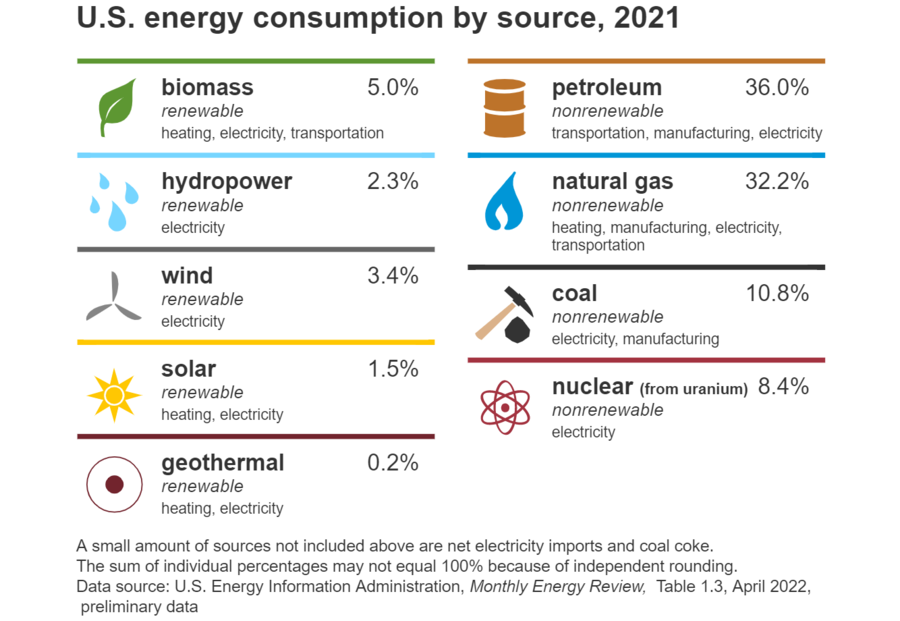How clean is clean energy?
Clean energy. Over the past decade, this term has become universal when describing the future of the energy industry and what is needed to combat climate change. Our communities, our country and our world need to move to cleaner sources of energy — such as solar, wind, geothermal, and hydro — that do not emit pollutants into the air and adversely affect climate change. However, there are questions and concerns around the manufacturing processes for products like solar panels and wind turbines, how electric vehicle (EV) batteries are produced and how these items will be recycled once decommissioned. These concerns and potential issues raise a bigger question: How clean is clean energy?
What is considered clean energy?
Clean energy is generally defined as energy that emits a minimal amount of or no contaminants and pollutants into the atmosphere, soil and water. Some well-known examples of clean energy generation include solar energy, wind energy, geothermal, biomass and hydropower. These energy sources all use natural, renewable elements to generate power with no emissions or, in the case of biomass, net zero emissions. According to the U.S. Energy Information Administration, clean energy sources are gaining traction in the United States — representing nearly 13% of total energy consumption as depicted in the figure below.
The dirty challenges
Despite the best intentions of the clean energy movement, there is still a great deal of work to do to make these energy sources cleaner from cradle to grave. China is the world’s dominant manufacturer of solar panels and uses electricity from coal-burning power plants to support the silicon, wafer, cell and panel manufacturing processes. The rapid increase in demand for solar panel installations over the past several years has forced these manufacturers to ramp up production — thereby also increasing electricity consumption and carbon emissions. And for wind turbine manufacturing, the production process has the potential to emit hazardous air pollutants such as xylene and ethyl benzene as well as volatile organic compounds into the atmosphere.
EVs provide a path towards reducing the emission impacts of the transportation sector, but they currently carry a significant environmental burden. According to a study from the Massachusetts Institute of Technology Energy Initiative, EV battery production generates more emissions than those produced for internal combustion engine vehicles — an initial emissions debt with EVs. Additionally, other concerns surrounding EV battery manufacturing include cobalt mining labor practices, the environmental impacts of the lithium extraction process and the potential toxic waste from the disposal of end-of-life batteries.
Recycling is another challenge as the United States and other countries strive towards clean energy sources and net zero goals. According to the National Renewable Energy Laboratory, wind turbine blade waste is anticipated to amount to approximately 2.2 million tons or more by 2050 — equivalent to the weight of over six Empire State Buildings in New York City. Currently, there are no existing cost-effective recycling methods for wind turbine blades, so blades reaching their end of life are landfilled. Solar panels face similar recycling challenges.
Shifting to the transportation sector, just 5% of EV batteries are currently recycled according to 2019 data from the U.S. Department of Energy. While battery recycling has likely improved over the past two to three years, it is safe to assume there is still a sizable recycling lag given the rapid rise in EV sales. Limited raw materials and regulatory policies may force EV manufacturers and other industry stakeholders to build the necessary recycling infrastructure and technologies.
An optimistic outlook on clean energy
Despite the range of challenges, there is growing optimism that the clean energy movement will become more resource efficient — reducing emission levels during manufacturing processes and creating a larger number of recycling and repurposing options for parts and materials. According to the International Council on Clean Transportation, the emissions from battery manufacturing are expected to decline significantly in the coming decades, particularly with the use of cleaner electricity throughout the production process. In fact, a 30% decrease in grid carbon intensity would reduce emissions from the battery production chain by about 17%. And even though the battery production process creates an initial emissions debt, EVs overtake traditional gas-powered vehicles in just two years with fewer overall emissions and reduced impacts to the environment.
On the recycling front, the U.S. Department of Energy recently announced funding to support the creation of new, retrofitted and expanded domestic facilities for battery recycling. The funding will also support research, development and demonstration of second-life applications — such as energy storage — for batteries previously used to power EVs. With wind power, several companies are looking into options for recycling and reusing wind turbine blades to create a more circular economy. Other firms have launched fully recyclable wind turbine blades or have committed to reusing or recycling all turbine blades once decommissioned.
While not perfect, clean energy initiatives are moving the needle towards increased sustainability, reduced emissions and fewer environmental impacts. The replacement of fossil fuel power with cleaner, more renewable sources of energy is a great start in the race to combat climate change. There’s still a significant amount of work to do, but the investments being made towards clean energy by government entities, utilities, companies and organizations, and consumers show the collective commitment to being better stewards of our world. Is clean energy really clean? Maybe not yet, but we’re getting there.
With 35 years of experience in the energy industry, Leidos is assisting utilities and government entities across the country with fleet electrification and carbon reduction initiatives. From EV site sizing studies to carbon-free assessments, our growing team of experts possess the qualifications and experience to help utilities and organizations confidently develop action plans and achieve their clean energy goals. For more information on Leidos and our clean energy support services, contact our team.




